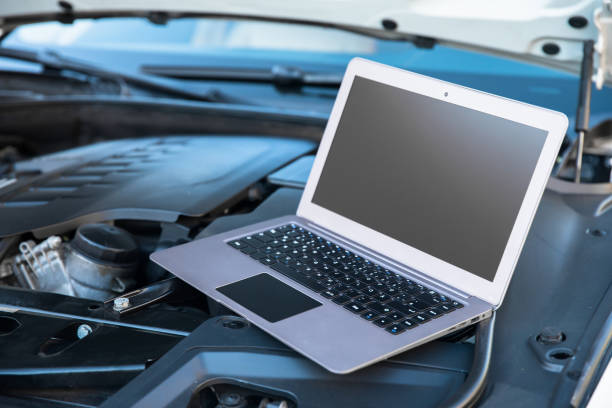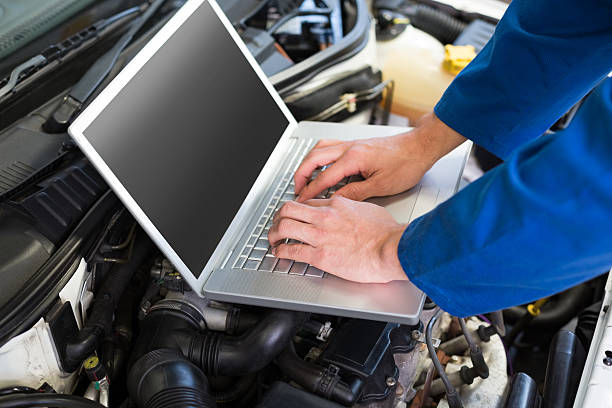Vehicle Remapping enthusiasts and everyday drivers alike are constantly seeking ways to enhance the performance of their vehicles. One of the most popular methods to achieve this is through vehicle remapping. But what exactly is remapping, and can it deliver on the promise of improved performance? In this article, we’ll delve into the ins and outs of vehicle remapping, exploring its benefits, potential drawbacks, and everything you need to know before leaping.
Understanding Vehicle Remapping

What is Vehicle Remapping?
Vehicle remapping involves modifying the software that controls the engine management system (EMS) of a car. The EMS is responsible for various functions, including fuel injection, ignition timing, and boost pressure in turbocharged engines. By adjusting these parameters, remapping can enhance the vehicle’s performance, efficiency, and overall driving experience.
How Does Remapping Work?
The process begins with connecting a diagnostic tool to the car’s onboard computer. A technician downloads the existing software, analyzes it, and then modifies it to optimize performance. This can involve increasing horsepower and torque, improving throttle response, and enhancing fuel efficiency. Once the modifications are complete, the new software is uploaded back to the vehicle.
The Benefits of Vehicle Remapping
1. Increased Power and Torque
One of the primary reasons car owners choose to remap their vehicles is the potential for significant power and torque increases. Depending on the vehicle, remapping can yield anywhere from 10% to 50% more horsepower and torque. This boost can make a noticeable difference in acceleration and overall driving enjoyment.
2. Improved Fuel Efficiency
Interestingly, remapping isn’t solely about increasing power; it can also enhance fuel efficiency. By optimizing the fuel-to-air ratio and adjusting other parameters, drivers may experience better mileage, especially during highway driving. For those looking to balance performance with fuel economy, remapping can be an attractive option.
3. Enhanced Throttle Response
Many drivers complain about sluggish throttle response in their vehicles. Remapping can address this issue by adjusting the throttle mapping, resulting in a more responsive and engaging driving experience. This enhancement can make daily driving more enjoyable and provide an edge in competitive situations.
4. Customization Options
Every driver has unique preferences and driving styles. Remapping allows for customization tailored to individual needs. Whether you prefer a smoother ride or a more aggressive performance, a skilled technician can adjust the remap to align with your driving goals.
5. Compatibility with Modifications
If you’ve made other modifications to your vehicle, such as installing a performance exhaust or a cold air intake, remapping can help optimize these changes. The new software can work in conjunction with other upgrades, ensuring that your vehicle performs at its best.
Potential Drawbacks of Vehicle Remapping
1. Warranty Concerns
One of the primary concerns regarding vehicle remapping is the potential impact on your vehicle’s warranty. Manufacturers may void the warranty if they discover that the vehicle has been modified, especially if a remap has caused damage. It’s crucial to check with your manufacturer or dealership before proceeding.
2. Risk of Engine Damage
Improper remapping can lead to engine damage, particularly if the new parameters push the engine beyond its limits. It’s essential to work with a reputable technician who understands the intricacies of your specific vehicle to minimize this risk. An experienced professional will ensure that the remap is safe and reliable.
3. Potential for Increased Emissions
Some remaps may increase emissions, which can be problematic, especially in regions with strict environmental regulations. If you’re considering remapping your vehicle, it’s vital to choose a reputable provider who understands emission standards and can provide a solution that adheres to them.
4. Insurance Implications
After remapping your vehicle, it’s essential to inform your insurance company, as failure to do so could lead to complications in the event of a claim. Some insurers may increase your premium or even refuse coverage if they are unaware of the modifications.
The Remapping Process
Step 1: Consultation
Before remapping, it’s crucial to consult with a specialist who can assess your vehicle and understand your performance goals. This initial consultation will help determine whether remapping is suitable for your vehicle and what specific changes can be made.
Step 2: Diagnostic Check
A thorough diagnostic check is performed to ensure the vehicle is in good working order. This step identifies any existing issues that could be exacerbated by the remap.
Step 3: Remapping
Once the vehicle is deemed ready, the technician will begin the remapping process. This involves downloading the original software, making the necessary adjustments, and uploading the modified software back to the vehicle.
Step 4: Road Testing
After remapping, a road test is conducted to evaluate the performance of the vehicle with the new settings. This step is crucial to ensure that the vehicle responds well and operates as intended.
Step 5: Final Adjustments
Based on the road test, further adjustments may be made to fine-tune the remap, ensuring that the vehicle performs optimally.
Is Remapping Right for You?

Consider Your Goals
Before deciding on remapping, it’s essential to consider your performance goals. If you’re seeking a more engaging driving experience, improved acceleration, or better fuel efficiency, remapping may be the answer. However, if you’re content with your vehicle’s current performance, remapping may not be necessary.
Research Reputable Technicians
Choosing a qualified technician is paramount. Look for professionals with a solid reputation, positive reviews, and experience with your specific make and model. A skilled technician will not only enhance performance but also ensure the longevity of your vehicle.
Assess Your Vehicle’s Condition
Before remapping, ensure your vehicle is in good condition. Any existing mechanical issues should be addressed before making software modifications. A well-maintained vehicle will benefit the most from remapping.
Conclusion
Vehicle remapping can indeed enhance your car’s performance, offering a range of benefits, from increased power and torque to improved fuel efficiency. However, it’s essential to weigh the potential drawbacks, including warranty concerns and the risk of engine damage. By consulting with reputable technicians and carefully considering your goals, you can make an informed decision that elevates your driving experience.
In the end, whether you choose to remap your vehicle or not, the key is to enjoy the journey and make the most of your time on the road. With the right approach, vehicle remapping can be a game-changer for enthusiasts and everyday drivers alike.
